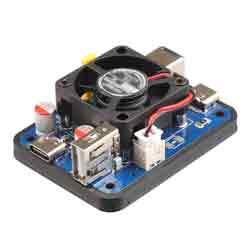- sales/support
Google Chat: zj734465502@gmail.com
- sales
+86-0755-88291180
- sales01
sales01@spotpear.com
- sales02
dragon_manager@163.com
- support
services01@spotpear.com
- CEO-Complaints
manager01@spotpear.com
- sales/support
WhatsApp:13246739196
Pi5-Power-PD-Activation-Module User Guide
【Overview】
[] 5V5A_PD Power Module: PD input, wide voltage input, multiple interfaces.
[] Compatible with NVIDIA Jetson Nano, NanoPi for Soft Router, Raspberry Pi 5.
【Product Introduction】
[] As chip performance continues to improve, power consumption is also on the rise. The Raspberry Pi 5, released in October 2023, is recommended to be powered at 5V5A. For platforms like NVIDIA Jetson and USB3.0 high-expandability routers such as R4S, the demand for current is increasing. The minimum starting point is 5V3A, but it is recommended to use 5V4A or, conditions permitting, 5V5A. In response to such high-current applications, our company has designed a new generation of 5V5A (short-term reaching nearly 5V6A) power module. Compared to earlier versions, the new design comes standard with a fan, ensuring stable and reliable operation under sustained high-current loads. It also adds support for PD chargers.
[] In recent years, fast charging for mobile phones and laptops has become popular, and PD chargers have gradually become widespread. PD chargers, compared to traditional chargers, have higher power and energy density, and the compact size of the gallium nitride PD charger has become popular. Early PD chargers were mainly used for laptop charging, with power ratings mainly at 45W and 65W. In recent years, rapid development in fast charging for mobile phones has led to a large number of low-power PD chargers between 20W and 33W. These chargers offer higher cost-effectiveness and are smaller and more convenient to carry. A 30W PD charger is sufficient to support the full load output of our 5V5A power module.
【Hardware Resources】
USB-C input supporting PD/QC protocols, with a PD/QC handshake voltage of 12V.
DC5.5-2.1 input, input range of 7-12V, with the option to use either of the two input circuits.
Dual interfaces with USB2.0-A and USB-C outputs, total output can exceed 5A.
Equipped with a voltage fine-tuning jumper; when jumped, the output voltage can be increased by approximately 0.2V.
Comes with a standard fan; the fan is not necessary for loads below 3A.
Standard 3D printed base for desktop protection.

【Raspberry Pi 5 Demo Connection】
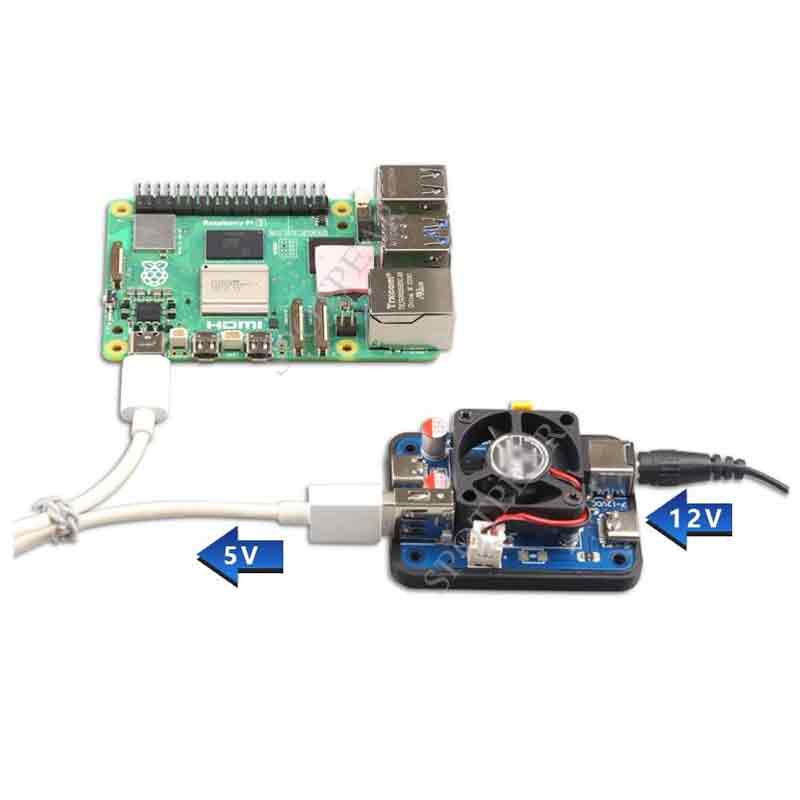
【The dimensions of the power module are compatible with the Raspberry Pi CM4 core board dimensions】
[] Portable, Space-Saving
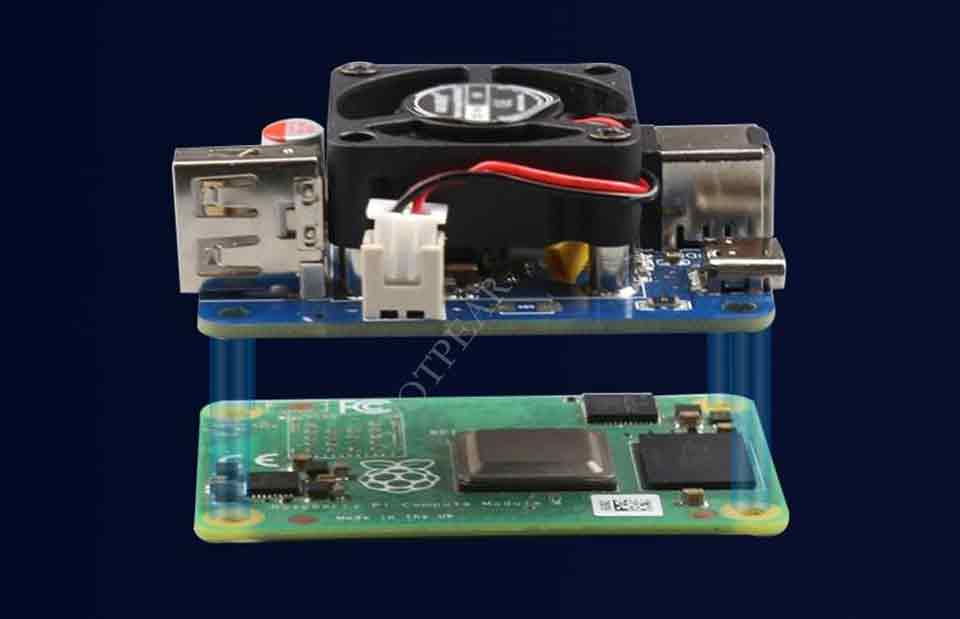
【Test Data】
[] If 12V is supported, it will attempt to handshake at 9V. To ensure support for 5V5A full load output, a PD charger with a 30W output capacity is required. Specifically, it needs to be capable of outputting 30W at 12V, which is 12V2.5A.
[] Summary:
1. Regardless of whether it's the QC or PD protocol, as long as it supports the 12V3A level, it can achieve a full load output of 5V5.5A or more. Supporting the 12V2.5A level can achieve an output of 5V5A or more.
2. The QC protocol uses the USB-A port, and the standard USB-A port has only one power line and one ground line. Generally, the power will be smaller than the USB-C interface (which usually has two power lines).
3. The charger's maximum total power cannot be the sole consideration. It is crucial to focus on how much current can be output at the 12V level. To achieve a 5V5A output, the 12V level must be capable of outputting 2.5A or more current. For example, with Baseus's 30W charger, its 12V level can only output 2A, equivalent to 24W. Therefore, it can only support a 5V4.6A output. In contrast, Green Union's 30W charger supports 12V2.5A, allowing it to support a 5V5.33A output.
Test Results:
[] Xiaomi 33W, single USB-C output, handshakes at 12V, outputs 4.9V.
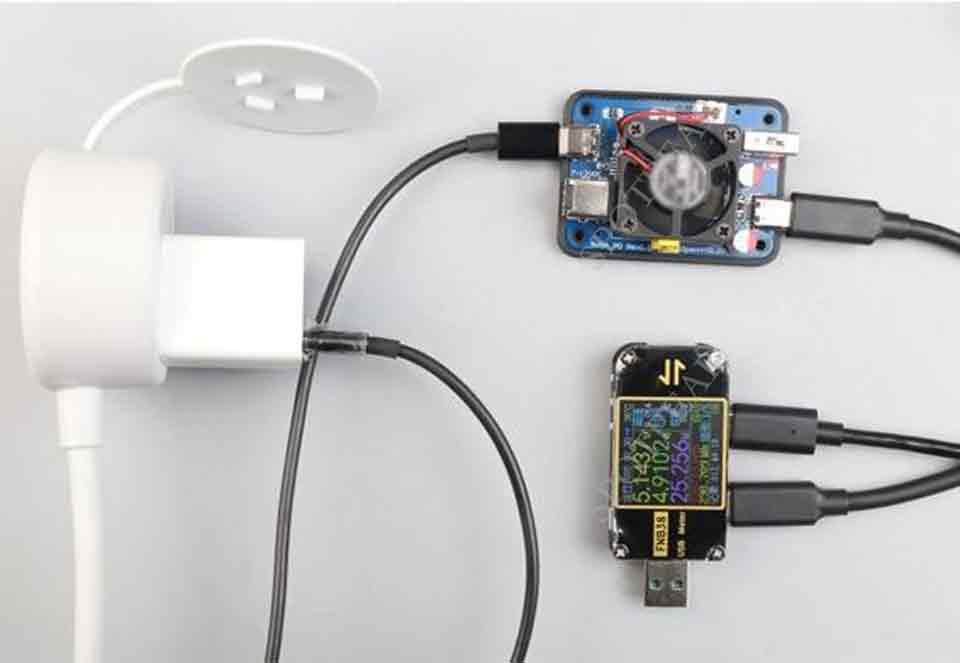
[] Purple Rice 65W, 2A1C, handshakes at 12V, outputs 5.75A.
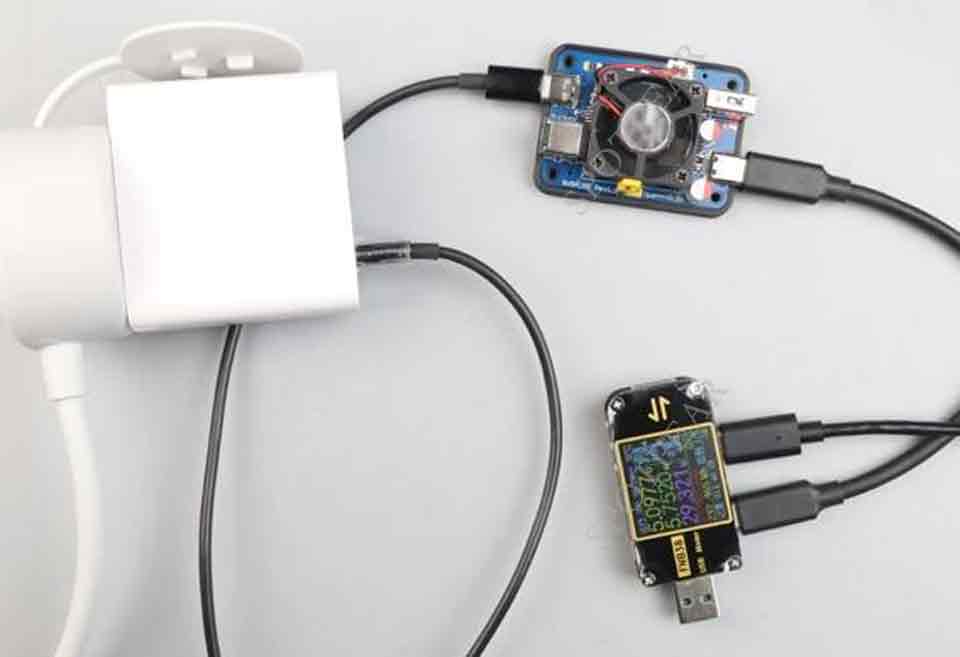
[] Baseus 65W, 2C1A, handshakes at 12V, outputs 6A.
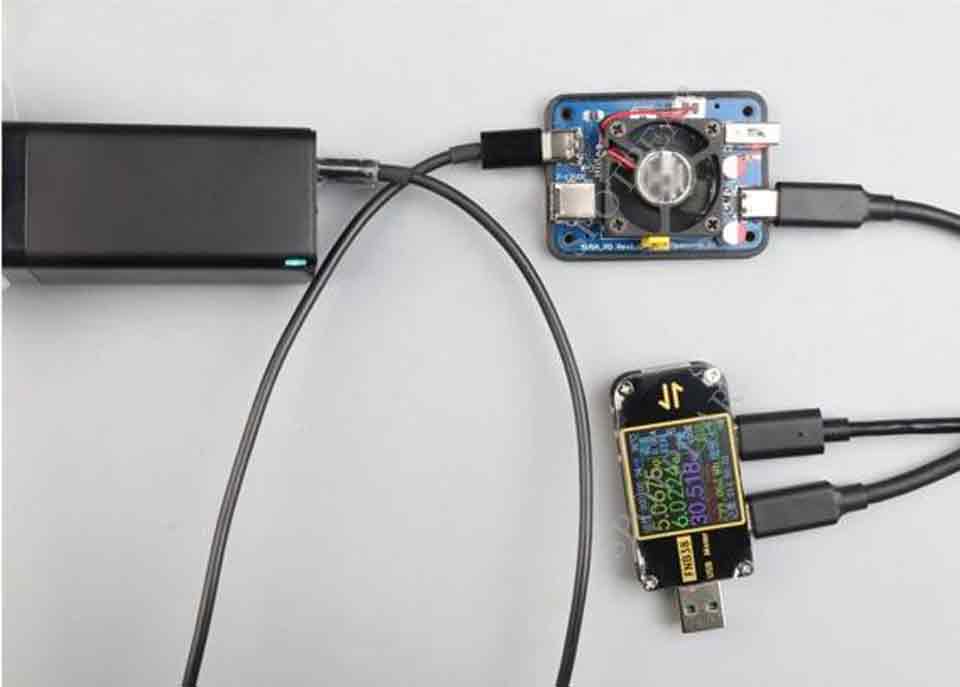
[] Baseus 65W Mobile Power, 2A2C, handshakes at 12V, outputs 5.75A.





